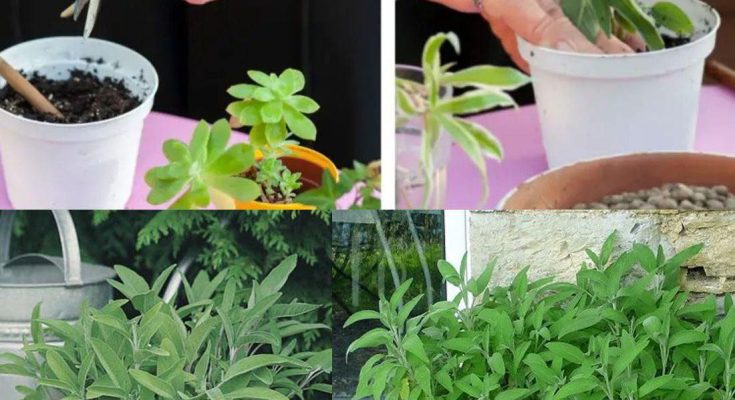Sage, a fragrant and beneficial herb from the Lamiaceae family, is a staple in both the kitchen and natural medicine cabinet. Growing sage yourself isn’t just rewarding; it’s a straightforward process if you follow the right guidelines with care and attention. Here’s how to cultivate sage in pots using a simple propagation trick that can yield an endless supply without any cost.
Optimal Conditions for Growing Sage
Sage thrives under specific conditions that mimic its native Mediterranean environment:
- Sunlight: Sage requires full sun, so place it in a spot that receives at least six hours of direct sunlight daily.
- Wind Protection: While sage is hardy, young plants should be protected from strong winds.
- Soil Requirements: Sage prefers well-draining soil with a slightly alkaline pH. It does not do well in clay-heavy soils or areas with water stagnation.
Planting Sage in Pots: A Step-by-Step Guide
- Choosing Your Pot: Select a pot about 30-40 centimeters in diameter to accommodate the plant’s long roots. Ensure the pot has good drainage.
- Soil Preparation: Use a mix of garden soil and compost to give your sage the nutrient-rich, well-draining environment it needs.
- Propagation by Cuttings:
- Collecting Cuttings: In the fall or spring, take a 4-6 inch cutting from a healthy, mature sage plant. Choose stems that are semi-hardened — not the newest growth but not the oldest wood either.
- Preparation: Remove the leaves from the bottom half of the cutting. Optionally, dip the cut end into honey, a natural rooting agent, before planting.
- Planting: Insert the cutting into the prepared pot. Plant multiple cuttings to increase your chances of success.
- Watering: Sage doesn’t require a lot of water. Water the newly planted cuttings sparingly, just enough to keep the soil slightly moist until roots develop.
Care and Maintenance
- Fertilizing: Feed your sage with a general-purpose fertilizer in the early spring and again in mid-summer to encourage growth.
- Pruning: Prune sage plants annually to encourage a bushy growth habit and prevent legginess. Always prune after the risk of frost has passed but before the plant blooms.
- Winter Care: In colder climates, mulch around the base with straw or bark to protect roots from freezing temperatures. Alternatively, if the pot is small enough, bring it indoors during the coldest months.
Harvesting and Storing Sage
- Harvesting: Sage can be harvested throughout the growing season. For the best flavor, harvest leaves in the morning after the dew has dried.
- Storing: Fresh sage leaves can be kept in the refrigerator wrapped in a damp paper towel and placed in a plastic bag for up to a week. For longer storage, sage leaves can be dried and stored in an airtight container.
Common Pests and Diseases
- Natural Pesticides: Protect sage from common pests and diseases by spraying a mixture of baking soda and water on the leaves. This simple fungicide helps prevent fungal infections.
Sage in Culinary Uses
Utilize fresh sage leaves to add flavor to dishes or create infused oils and vinegars. Sage is versatile in the kitchen, enhancing everything from meats and soups to bread and butters.



